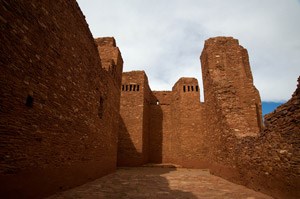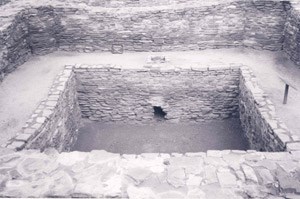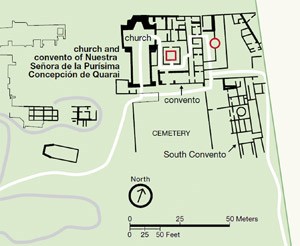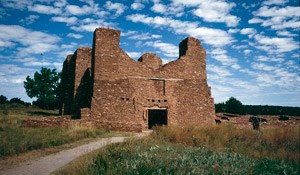
Quarai, Mission Nuestra Señora de la Purísima Concepción de Quarai
Quarai, Salinas Pueblo Missions National Historic Monument
Mountainair, New Mexico
Coordinates: 34.520372, -106.241890
#TravelSpanishMissions
Discover Our Shared Heritage
Spanish Colonial Missions of the Southwest Travel Itinerary

Photo by BriYYZ. Courtesy of Flickr Commons.

From SAPU Museum Collections. Courtesy of the National Park Service.

Courtesy of NPS.

Photo by HJPD, 1998. Courtesy of Wikimedia Commons
Plan Your Visit
Quarai, a National Historic Landmark and part of the Salinas Pueblo Missions National Monument unit of the National Park System, is located near the eastern base of the Manzano Mountains about a mile west of Punta de Agua in Torrance County, NM. Click here for the Quarai National Historic Landmark file: text and photos. The main visitor center for Salinas Pueblo Missions National Monument is on the corner of Ripley and Broadway Sts. in Mountainair, NM. The center is open year-round from 8:00am to 5:00pm except for Thanksgiving, Christmas and New Year's Day.
Quarai is located 8 miles north on NM 55 and 1 mile west and are free to visit and open daily but hours change seasonally. For more information, visit the National Park Service Salinas Pueblo Missions National Monument website and its Quarai website, or call 505-847-2585.
Salinas Pueblo Missions National Monument is also featured in the National Park Service American Southwest Travel Itinerary, Places Reflecting America's Diverse Cultures: Explore their Stories in the National Park System Travel Itinerary and in the American Latino Heritage Travel Itinerary.
Last updated: April 15, 2016
